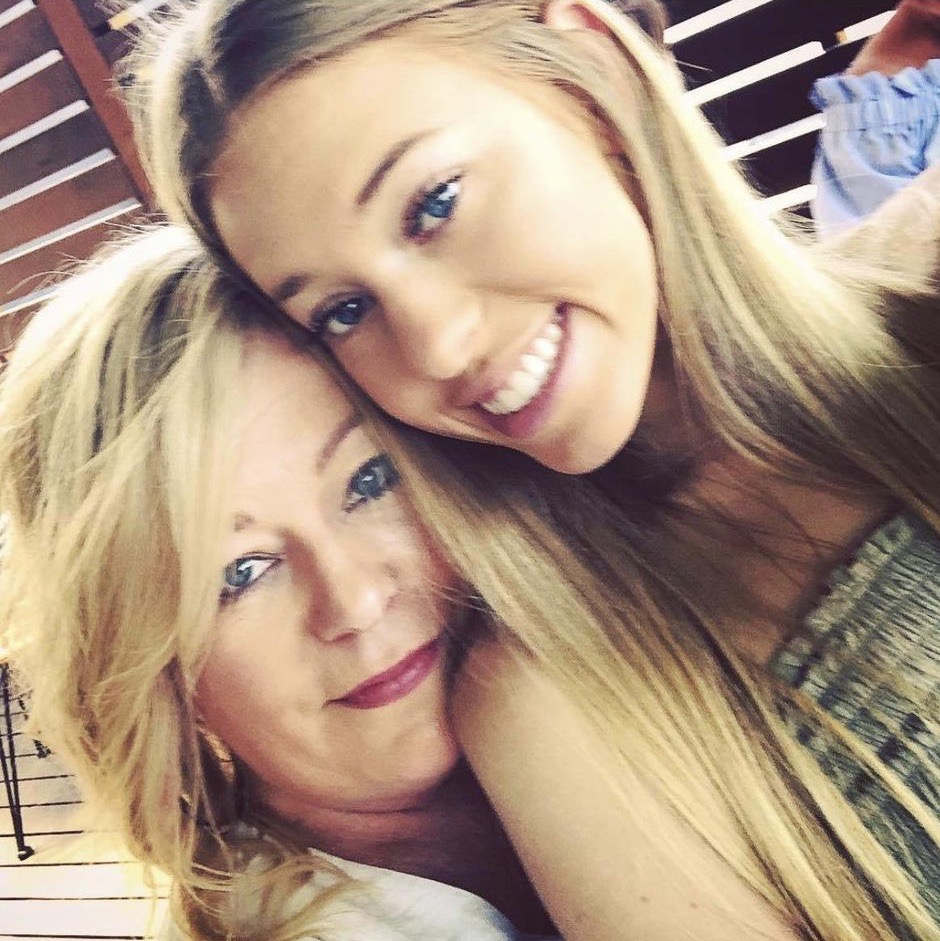Eating disorders have the highest mortality rate of all mental illnesses and are only becoming more common in our society. Melbourne mum of three, Jeanie, speaks on her experience watching her daughter develop an eating disorder at only 15 years old. She offers insight into how to heed the warning signs in your child.
For most, eating is a pleasant and sociable experience. However, this is not the case for one million Australians who suffer from an eating disorder. As a parent, it can be your worst nightmare watching this illness take control of your child’s life.
This was the unfortunate reality for the loving mother of three, Jeanie, who lives in outer Melbourne along with her husband, where they spend their time going for walks with their two dogs and enjoying their quiet country town. Raising two sons and one daughter, Jeanie’s household was full of laughter and love. However, life became daunting once Jeanie began to experience the deterioration of her daughter, who developed an eating disorder at the early age of 15.

Jeanie speaks openly about how it felt watching her daughter’s sudden switch in behaviour towards food and life in general. She shares her pain, “You feel like an absolute failure at parenting because this precious child was obviously suffering right in front of you and you just let it happen”.
“You feel like an absolute failure at parenting because this precious child was obviously suffering right in front of you and you just let it happen.”
The most lethal eating disorder, anorexia, is known for having one of the highest mortality rates of all psychiatric disorders, making it the most deadly mental illness. An Arcelus study recorded that there are 5.1 deaths per 1000 people with anorexia each year and it continues to grow.
Jeanie’s daughter was diagnosed with anorexia nervosa in 2016, after expressing concern in regards to her extreme weight loss.
Now more than ever, the after-effects of experiencing a pandemic and dealing with multiple lockdowns in Australia, has had an extreme influence on the number of eating disorders since pre-COVID. The number of new eating disorder cases increased by 34%, rising from a weekly average of 654 in 2020 to 878 in 2021. The Butterfly Foundation, a helpline for those struggling with eating disorders or body image issues, stated they have experienced “High volumes of calls due to the challenges of COVID for many people experiencing eating disorders”.

The unfortunate reality of this mental illness is that you cannot prevent it from taking over your child’s mind. Many parents, including Jeanie, have little control over their child’s eating disorder and how they choose to cope. However, it is possible to pick up on warning signs in the early stages of an eating disorder and provide help for your child before it spirals further. Disordered eating habits can be the first indicator/gateway into an eating disorder.
Disordered eating vs Eating disorder
According to assistant professor Katie Loth, “Disordered eating is the most significant risk factor for the onset of an eating disorder.” It is important to distinguish the difference between both disordered eating and eating disorders. Those who have disordered eating habits do not always spiral into an eating disorder. However, it is still an extremely dangerous habit and can have similar lasting effects that of an eating disorder.
“Disordered eating is the most significant risk factor for the onset of an eating disorder.”
Disordered eating habits have become more normalised in society as people, including young children, find different ways to lose weight in hopes of achieving an unrealistic body standard. Jeanie speaks of warning signs she picked up on from her own experience with her daughter. “She had always been a great eater growing up, it wasn’t until a couple years into high school at her All Girls college when she started to shift.” Jeanie recalls moments where her daughter slowly stopped joining in on a family cheese platter, food she used to enjoy and asking for salads in her lunch. At first this may seem completely normal and somewhat healthy. However, it is essential to pay close attention to your child’s eating habits at all times and keep an eye out for warning signs. These signs can range from anything between physical and emotional indications.

Physical signs
- Noticeable fluctuations in weight
- Stomach complaints
- Hair thinning
- Changes in menstrual cycle (for girls)
- Increased fatigue
Emotional signs
- Preoccupied with food, calories and their body image
- Limiting specific food groups (eg. carbs)
- Withdrawing from social activities and any activities involving food (eg. dinners)
- Anxious prior to or during eating times
At first, Jeanie didn’t suspect her daughter’s actions to be an alarming behavioural change, but assumed she was “trying to act older” and was simply “too sophisticated for a sanga, banana and a little chocolate in her lunch”.
Eventually, Jeanie started noticing that her daughter had grown a sudden willingness to take control of the food she was putting into her body, through diet and restriction.
Dieting
National Eating Disorders Collaboration (NEDC) affirm that “Dieting is one of the strongest predictors for the development of an eating disorder.” This can include anything from your child simply replacing meals for ‘healthier’ alternatives or restricting specific foods. This supports the false notion that certain food groups are ‘bad’ and should be avoided. It is important to stay mindful of this and ensure that food groups are not labelled as good or bad when educating children on the importance of nutrition and health.
Motivation Behind Disordered Eating
It can be collectively agreed upon that the main intention behind disordered eating is the pressure to ‘look’ a certain way. Jeanie explains that once her daughter lost her “Pre-adolescent weight,” she began receiving an influx of compliments, which inevitably fed the motivation behind her disordered eating. Jeanie believes the focus on the “Selfie” and the “Beginning of the instagram age,” puts an immense amount of pressure on teenagers to focus on their appearance in ways that are damaging.

Pressure on Parents
Not only does disordered eating affect the lives of those who fall victim to the illness, but for their loved ones too. Jeanie expresses her times of hardship dealing with emotions of guilt, stress and worry regarding her daughter’s illness. “Of course, I blamed myself. There were times in my life where I had ‘cut carbs’ or fasted or whatever. Had she watched me do that and learned dieting behaviour?” Not only did this cause Jeanie an extreme amount of anxiety, but she also found herself growing annoyed with her daughter during this time. “It was very, very frustrating. There were times when I wanted to yell, ‘Just f****** eat the cake!!!’ or whatever it was”.
“Of course, I blamed myself. There were times in my life where I had ‘cut carbs’ or fasted or whatever. Had she watched me do that and learned dieting behaviour?”
Fortunately, Jeanie’s daughter is slowly recovering after six long years of dealing with this horrible illness. Despite still struggling with health issues related to liver function and a weakened immune system as a result of her eating disorder, Jeanie’s daughter is growing stronger mentally and physically every day.
No one is safe from this illness. Anyone can fall victim to disordered eating and can eventually develop an eating disorder at any stage in their lives, despite their relationship with food. Disordered eating habits are all around us and it is our responsibility as a society to pick up on these unnatural behaviours, put a stop to it and ensure it does not progress any further.
Jeanie shares a piece of advice she urges parents to take on board: “Jump on it! Educate yourself and trust your instincts. The earlier the intervention, the earlier you can start removing this monster from your loved ones’ heads, because it can spiral so quickly”.

If you or a loved one are struggling with any of the issues discussed in this article, please contact Butterfly Helpline. Be sure to confide in your friends, family or anyone willing to listen for support.








